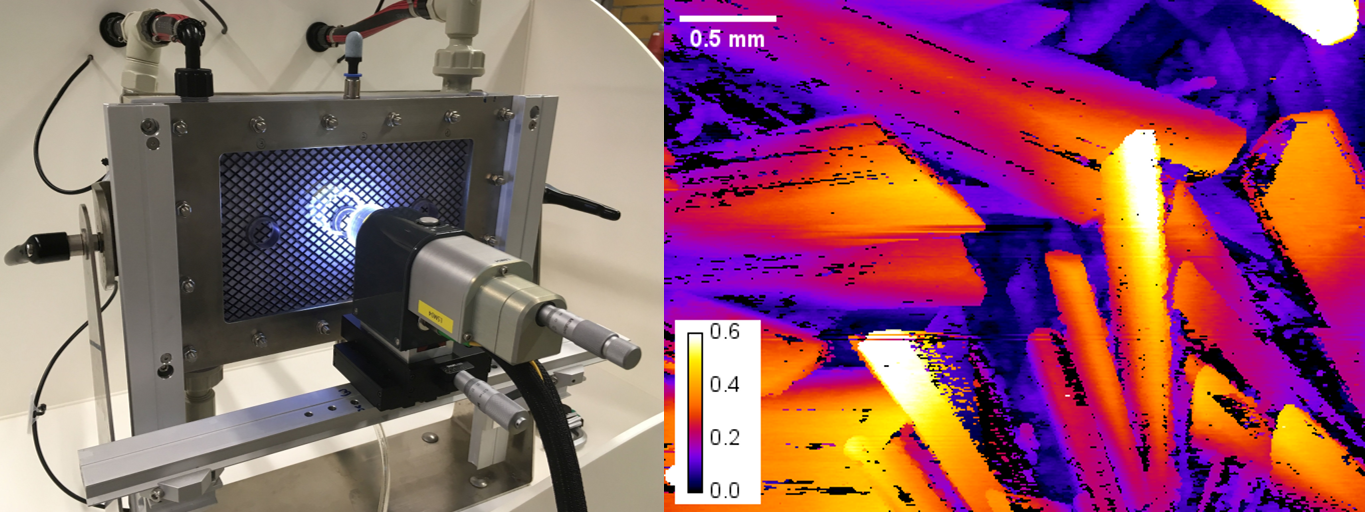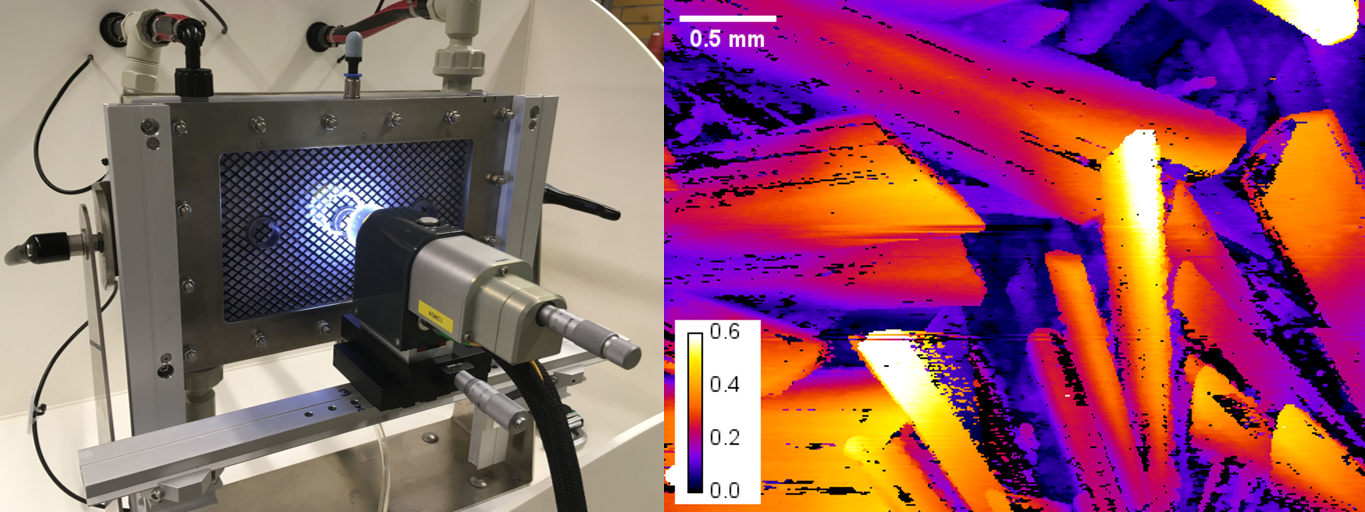The developed method allows non-invasive visualization of the membrane condition during operation and quantification of the amount of scaling. By calculating new scaling parameters, this makes it possible for the first time to objectively assess the top layer, which allows plant operation to be optimized.
Membrane processes, such as membrane distillation (MD), are often used in the treatment of highly saline waters. In the operation of these processes, the formation of fouling (in particular scaling) is considered the biggest challenge and process-limiting factor. The development of a non-invasive monitoring tool to investigate the effect of membrane fouling on membrane performance may provide an interesting alternative for plant operators by providing membrane-based monitoring for the first time.
Optical coherence tomography (OCT) enables online visualization of the membrane through three-dimensional, high-resolution image data sets. Areas of several 10 mm² can be scanned in less than a minute, allowing visualization of the membrane surface even during operation. This allows a test-accompanying assessment of the surface layer development and its effect on operation, as shown here for the MD. A special method for data set analysis was developed to reliably detect and quantify scaling. Newly defined fouling parameters (RS and RC) correlate process parameters (here specifically the decrease in flux) and the results of scaling analysis using OCT. In addition, structural information about the fouling layer can be obtained from the parameters. The use of the in-situ method can also contribute important information to the optimal cleaning time, duration of cleaning and selection as well as saving of chemicals in membrane cleaning processes.
Currently, the developed method is not yet applicable in industry. In addition to sound expertise in data set analysis, the costly acquisition of an OCT device is not considered realistic for companies. However, waters to be treated can be examined in the test facility (service) to check the scaling potential and subsequently make recommendations on process operation based on the scaling analysis.



